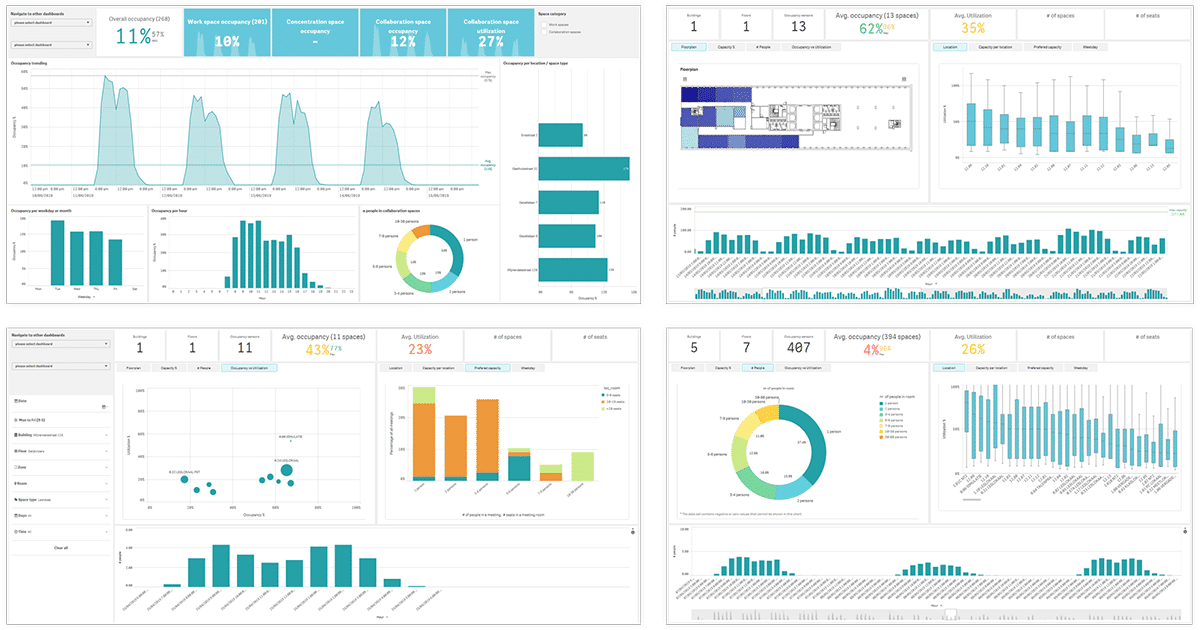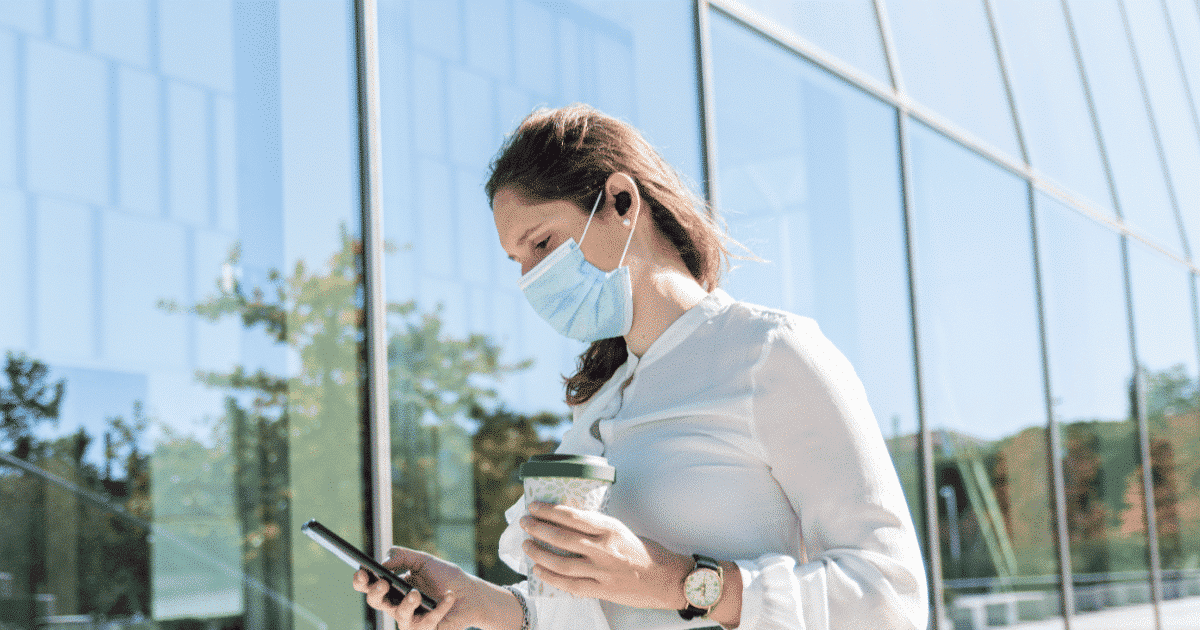The modern workplace is in upheaval. Social distancing, quarantines, and stay-in-place orders around the world are driving a shift towards remote work at an unprecedented scale. While many workers are finding ways to achieve productivity gains as they cut back on commuting, others struggle with distractions, connectivity problems, and a sense of isolation. It seems that, in spite of remarkable adaptivity on the part of companies and their workforces, the office as we know it retains much of its value. As societies find ways to manage the spread of COVID-19, there are steps that workplaces can take to facilitate the transition back to “normal” – and to set in motion positive changes for the future.
Smart Technology to Support Workplace Transformation
Integrated Workplace Management Software (IWMS) coupled with Smart Building solutions, or IWMS+, can help companies ensure greater safety, comfort, and confidence during this time. IWMS consists of a software platform that centralizes facilities data and creates user-friendly processes to enhance efficiency. It can streamline maintenance ticketing, establish reservation systems for room management, and help with the administration of buildings, from sanitation to finances. Smart Buildings technologies deploy sensor technologies to optimize building data collection and process that information to develop building management solutions in real-time. IWMS+, a unique capability offered by Spacewell, combines these two technologies by linking the powerful data and analytics of Smart Buildings with the services enabled by IWMS to automate and optimize workplace transformation and building performance in terms of efficiency, productivity, and well-being.
IWMS+ also offers a particularly powerful platform to develop transformative workplace solutions. Already, we at Spacewell are helping clients in the healthcare sector deploy IWMS+ technologies to target cleaning and maintenance activities where they are needed most. We are also supporting cleaners directly with location-based information to support them in their COVID-19 response. But we believe that businesses across all sectors could see significant returns on investment – both from a financial and human standpoint – by adopting these solutions to adapt to an uncertain future.
Addressing Workplace Transitions in the Short Term
In the short term, workplaces will be taking on three core challenges when workers return to the office: managing potential resurgences of the virus and renewals of social distancing, implementing new standards for sanitation and workspace utilization, and ensuring worker comfort and productivity during a stressful time. IWMS+ offers multiple ways for building managers to resolve these challenges during the transitional period. Four interventions, in particular, could be deployed to ensure a safer and more efficient workspace during this time.
Utilization information
First, by providing granular utilization information, IWMS+ can help ensure that workers are spaced farther apart in areas where they spend most of their workday, minimizing prolonged periods of potential exposure to pathogens. By giving workers and managers knowledge about where others are seated in real-time, even in an agile workplace – building managers can minimize the risks of exposure during new occurrences of infection.
Reservation System
Second, childcare needs, safety concerns, and other factors may lead many workers to delay their return to work. In this case, a universally-deployed reservations system can help workplaces and colleagues remain informed about who is working in the building – and where. Mapping the specific locations of employees can reduce the amount of time spent searching and increase employee productivity. Moreover, in the event that a new infection is identified, building managers can turn to a reservations system to trace potential exposures, identifying those who may have been in close proximity and be at high risk for transmission. Beyond identification of exposures, such a reservations system could also track contact information so that those affected can be easily notified about the need for testing.
Targeted Sanitation Approaches
Third, while custodial staff is implementing new sanitation procedures throughout workplaces, more targeted sanitation approaches could achieve greater efficiency and safety. IWMS+ that includes specific cleaning tasks tailored to workspace usage could help ensure that additional time and resources are devoted to high-risk areas based on actual usage rather than usage assumptions. These technologies can ensure that cleaning protocols are escalated near seating reserved by potentially exposed individuals and at intervals that follow intense space usage, tracked in real-time.
Comfort Tracking
Fourth, the combination of these interventions, coupled with other comfort-tracking initiatives, can help give employees peace of mind about returning to work. Many employees, particularly those who are located in viral hotspots or who fear for the safety of vulnerable family members, may be reluctant to return to a shared office space without demonstrable efforts to ensure employee welfare. Adoption and communication of enhanced technologies to adapt to changed health circumstances can send a powerful signal to employees that their welfare is a priority – while creating opportunities for future improvement. As more becomes known about the environmental conditions that can inhibit viral spread, comfort sensors can also be tied to building systems to automatically maintain humidity and temperature levels that reduce the risk of transmission, creating a safer, more comfortable workplace for all.
Tackling Long-Term Workplace Transformation
In the long term, the remarkable shift towards remote work also presents workplace transformation opportunities. While many employees are finding it difficult to maintain productivity in their home office – whether due to space constraints, family obligations, or other distractions – others have discovered that many work functions can successfully be conducted from home. While workplaces are likely to transition all or most of their employees back to the office environment, greater flexibility for remote work is nevertheless likely to become a trend1. If so, employers can benefit enormously from a reassessment of their workplace needs, whether that means a switch to an Agile environment, a reduction in the office footprint, or alterations in maintenance schedules.

Leveraging Utilization Data for Workplace Transformation Decisions
In order to make such a reassessment successful – whether managed in terms of employee productivity and satisfaction, money saved on real estate or maintenance, or other relevant metrics – workplace managers need to thoroughly understand how their spaces are being used. IWMS+ allows extensive and unobtrusive data collection that can inform decisions about whether or not to shift to an agile work environment, how much floor space might be required, what kinds of physical improvements (e.g. ventilation systems) might be required to enhance employee wellness, how to streamline cleaning procedures in light of changing standards, and other process-based or physical workplace transformations. The significant disruptions of COVID-19 will change behaviors and standards, and both better data and better tools will be required to adapt quickly and effectively to the new demands of the modern workplace.
What can Spacewell do for you?
Spacewell’s product suite gives workplace managers the tools to manage both the short-term transitions and long-term transformations necessary to mitigate ongoing disruptions as well as to drive performance improvements. Because our products are designed for out-of-the-box functionality, they can be deployed rapidly rather than relying on expensive and extensive custom programming. Moreover, we are the only provider2 that is a leader in both IWMS and Smart Buildings solutions, allowing us to both collect data and give our clients the tools to translate that information into actionable solutions. Finally, because Spacewell is part of the Nemetschek Group, with a market capitalization of over $5.5 billion and over 25 years of leadership in the IWMS and Smart Buildings space, our clients can move forward with the confidence that Spacewell will be a stable partner during this disruptive time.
We recognize that, in the short term, access to buildings and hardware may be limited and that not all solutions can be implemented immediately. However, many of Spacewell’s software solutions can provide provisional support even without hardware installation. Please contact us to discuss how we can help you achieve your workplace transformation goals.
1 In fact, a recent Gartner survey suggests that nearly three-quarters of all CFOs intend to move previously on-site employees to permanently remote positions when the COVID-19 crisis ends. Gartner (4/3/2020), “Gartner CFO Survey Reveals 74% Intend to Shift Some Employees to Remote Work Permanently” www.gartner.com. back
2 Spacewell is the only company to be classified as a “Leader” in the Verdantix Green Quadrant reports for both Integrated Workplace Management Systems and IoT Platforms for Smart Buildings in 2019. back
*Disclaimer: Spacewell and its affiliates do not make any claim to medical expertise. The preceding assessment is based on current public information about COVID-19, including guidance from the CDC and WHO. Any analysis may be subject to revision as more becomes known about the virus.









